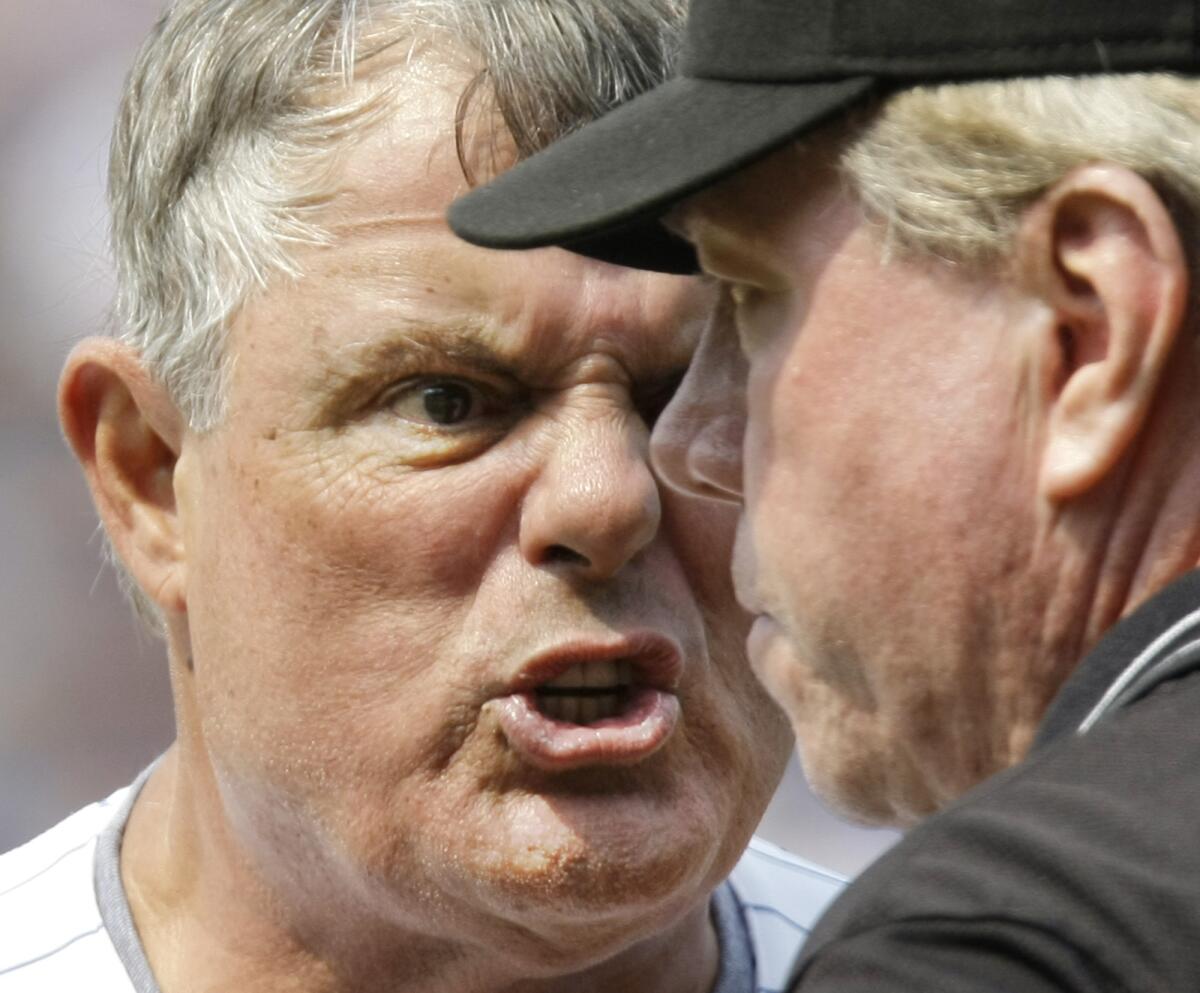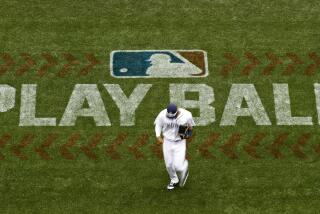Why baseball has gotten a lot less fun to watch this year

Devoted baseball fans surely have noticed that a certain tradition has been missing from the game this season. Yes, it’s those volcanic, spittle-flecked donnybrooks between managers and umpires that used to lend so much sudden drama to the action on the field.
The culprit is obvious: instant replay.
It’s not that there are fewer close calls on plays provoking managers to come bounding out of the dugouts. It’s just that when they meet up with the offending umpire, there’s nothing to argue. Instead of turning around the bills of their caps and going nose-to-nose, they hold a decorous little chat until the bench coach, examining his own replay, can decide whether the call is worth challenging. For all anyone knows, they might be killing time with a discussion over which side the salad fork goes on a table setting.
If there’s no challenge called, the manager trots back to the dugout and play resumes. If there is, the umps don headsets for the word from league headquarters, and a minute or two later call “out” or “safe,” and ... play resumes. Who you gonna scream, poke, or kick sand at? The replay machine?
It’s hard to quantify how far the rate of manager-ump confrontations has dropped; I just know I haven’t seen a single one thus far this year. Managers could detect the handwriting on the wall from the very beginning. “It’s just turning into a lovefest,” Tampa Bay Manager Joe Maddon told MLB.com’s Mike Bauman back in April, just two weeks after the season opened. “It’s almost like you can’t get upset anymore.”
One fears that this could render the firebrand manager as extinct as the spitball. It’s a safe bet that former Atlanta Manager Bobby Cox’s record of 161 ejections — the product of a near-record 3.6% ejection rate and a three-decade career — will stand as securely as Joe DiMaggio’s 56-game hitting streak. (See this painstaking analysis of manager ejections by sabermetrician Scott Lindholm for the details.) The outstanding umpire-baiter of my early years of fandom was Baltimore’s Earl Weaver, though I was present at a memorable Yankees home game in 1974 at which Billy Martin came tearing out of the dugout, kicked sand on the home plate ump’s shoes and got tossed out of the game — all before the first pitch was thrown.
The accompanying videos provide good rundowns of manager ejections of the past, with special attention to the Earl of Baltimore. For a look at the quintessential Weaver tantrum see this YouTube video, but wear headphones — it is SPECTACULARLY not safe for work.
Baseball purists may hold that the eradication of manager conniptions is good for the game, since who really needs to watch a couple of potbellied codgers carrying on for 10 minutes while everyone else stands around, especially since there’s never been a fight that has resulted in a changed call? Yet in the same way that the DH rule deprived managers of a focal strategic decision (when to remove a pitcher for a pinch-hitter), instant replay has deprived them of an important in-game motivational tool. We all know that managers customarily stage these ritual outbursts to get their sleepy players off their butts. If the result is an ejection, so much the better.
Yet one curious aspect of the trend is that it doesn’t seem to have had an effect on manager ejections. According to figures compiled by the Umpire Ejection Fantasy League (some people will go to any length for a sports fix), by June 1 last year there had been 27 manager ejections; by the same date this year, 27 manager ejections.
One marked difference, however, is the location of the offense; last year 16 of those ejections were made by the home plate ump, compared to 21 this year. That may be a sign that managers have shifted their motivational eruptions to ball-and-strike calls, which aren’t subject to instant replay, or have stepped up their ragging of home plate umps from the bench. Either way, a pretty weak substitute.
So far, the absence of these most theatrical displays in baseball hasn’t affected attendance, which is running almost neck-and-neck with last year. But there is something a little unfair about taking a weapon out of the managerial arsenal. In the past, baseball has compensated for rule tweaks that have unanticipated or excessive consequences — changes in the pitcher’s mound or the strike zone, for instance — with counter-tweaks in subsequent years.
Now that they’ve made things a little more sedate on the field, the lords of baseball should find a way to restore that little bit of disorder that the game is missing. Don’t the fans, and the managers, deserve it?







